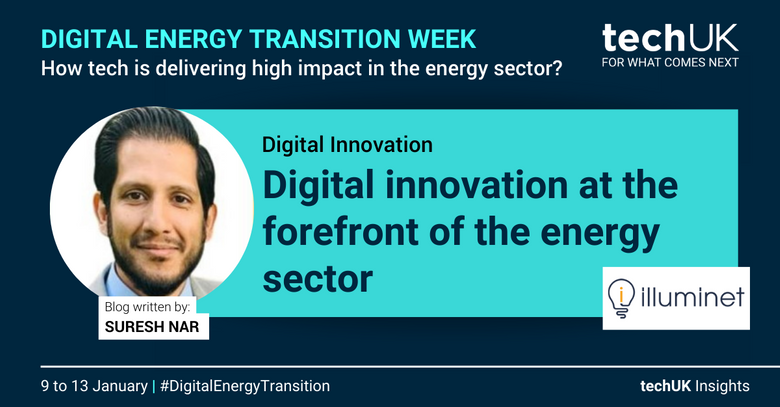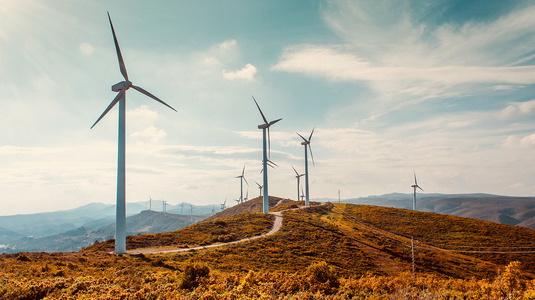Is There Innovation Despite The Great Energy Crisis? (Guest blog by Illuminet Solutions)

Globally, we are living in the age of the great energy crisis, with spikes in market prices and with the sector facing the significant impact of factors such as:
-
geopolitical upheaval
-
increased focus on security of supply and supply chain resilience
-
the energy transition and new sources of energy
-
the proliferation of electric vehicles and its infrastructure
-
increasing frequency of extreme weather events
-
and all under the backdrop of tough economic times.
Light at the end of the tunnel
End consumers are tired of hearing about high energy prices. They are keen to know how energy prices will come down and how can they receive a better, more efficient and environmentally friendly service.
Clearly the macro and geopolitical challenges will not be solved here, but digital innovation is one of the few topics that can contend with the profound level of change owing to the energy crisis. Indeed, digital innovation can:
-
drive economic growth
-
foster better outcomes for consumers and energy users
-
better inform today’s decisions by taking advantage of every element of spend and speed
-
and better anticipate future needs and challenges as we move towards the energy transition.
5G and cloud
5G technologies and cloud can help energy organisations get the best out of rising volumes of connected devices and their associated data. This enables energy and utilities organisations to recover data from devices such as smart meters, sensors, and store this data on the cloud, to complete analysis and derive insights.
The impact of IoT
IoT enabled smart meters are already supporting the push towards a more resilient energy system and the path to net zero, with 23 million (and counting) smart meters connected to Smart DCC’s UK network. Wider applications with interconnected sensors are providing real-time data for preventive maintenance, monitoring energy assets, and optimal decision-making in production. IoT-enabled energy storage and analytics can pore over market data to balance the supply and demand of renewable energy.
Increasingly sophisticated automation
Utilities have introduced RPA (robotic process automation) across billing, meter reading validation and complaints, to enhance the quality of repetitive tasks, which may be prone to human error. The applications are extending widely to other areas, for example improving retention by identifying patterns that could indicate a risk of customer churn, all of which are possible with the increasing sophistication and reduction in the cost of RPA.
Artificial intelligence and analytics
AI is driving smart grids, whereby energy and data is intelligently transferred between the energy provider and consumer. This drives efficiency across the energy value chain, in collecting, storing, and supporting the analysis of immense volumes of data. Insights can be derived from this data for efficiency, forecasting and troubleshooting such as in fault identification. Advanced analytics supported by machine learning can increase the accuracy of forecasting from AI capabilities, all of which can be used to balance the demand for fossil fuel derived energy versus renewable energy.
Smart grid operations
Flexible loads are a demand response in which appliances are used to shift electricity demand and bring greater balance to the grid during peak events, with consumers rewarded with cheaper rates or incentives. EV chargers and smart thermostats are common appliances with flexible loads and supported by consumer side digital apps and displays. These innovations will increase to support resource planning, reduce costs, support resilience and function as an enabler for decarbonisation.
Blockchain as a disruptor
Blockchain pilots are increasing, with benefits in efficiency, cost savings and resilience. Blockchain can be a disruptor with energy trading transactions recorded and settled in near real time, with no requirement for an intermediary and little or no need for reconciliation since all parties are on the platform – with potential to replace traditional ‘settlement’ regimes. Blockchain can support decentralisation via peer-to-peer energy trading and managing and logging renewable energy sources across the blockchain.
A work in progress
Undoubtedly ‘keeping the lights on’ is the primary objective, and therefore innovation is still a work in progress, but it is happening despite the energy crisis, and can be an enabler to solve today’s energy and utilities challenges.
To find out more about how Illuminet is helping our clients in digital transformation and innovation, you can contact us at:
Email: [email protected]
Telephone number: 01202 770 162
LinkedIn: Illuminet
Instagram: illuminet_eco
Twitter: @illuminet_Sol
Get involved with our work
All of techUK’s work is led by our members – keep in touch or get involved with our work on transport and infrastructure by joining our groups.




